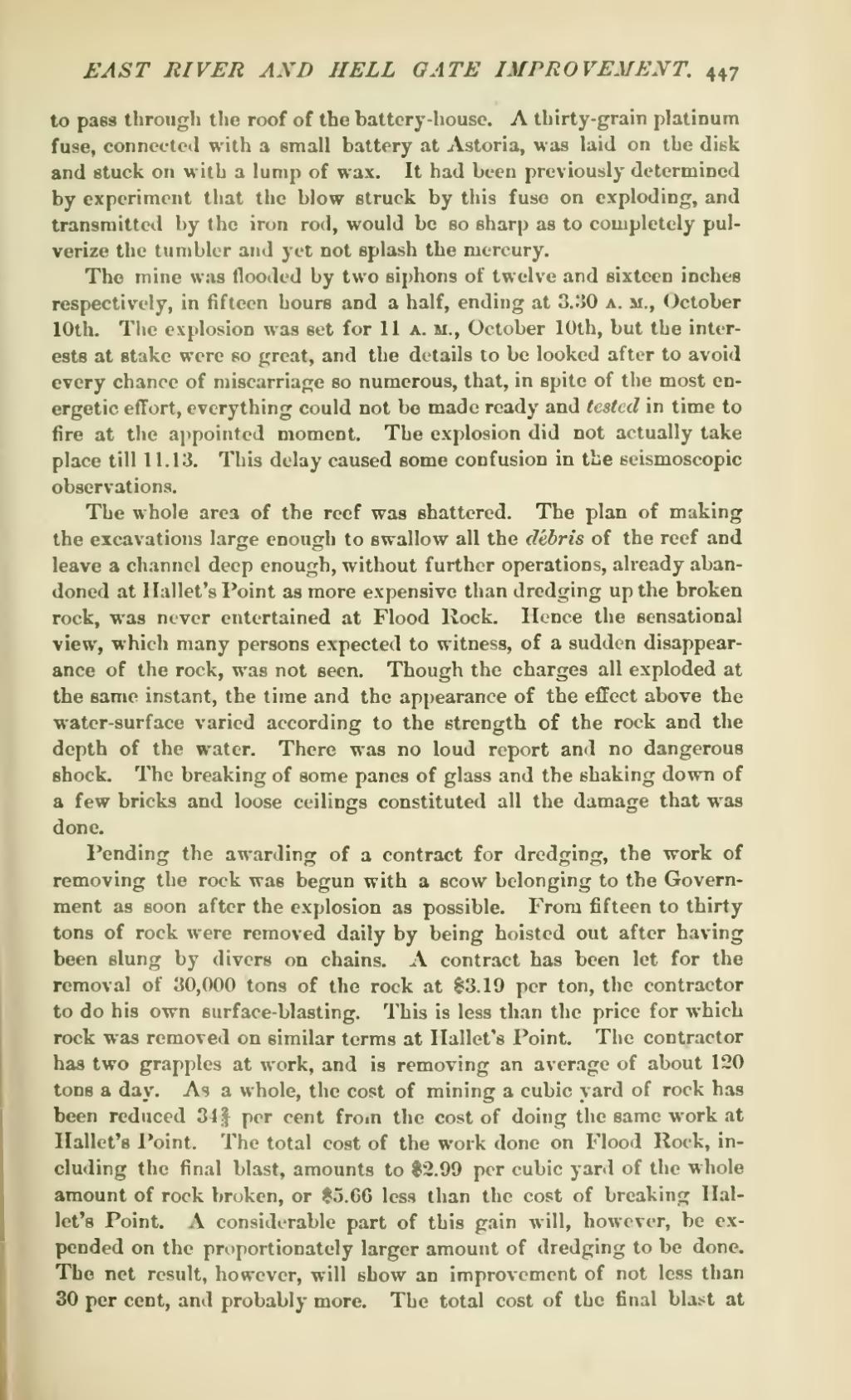to pass through the roof of the battery-house. A thirty-grain platinum fuse, connected with a small battery at Astoria, was laid on the disk and stuck on with a lump of wax. It had been previously determined by experiment that the blow struck by this fuse on exploding, and transmitted by the iron rod, would be so sharp as to completely pulverize the tumbler and yet not splash the mercury.
The mine was flooded by two siphons of twelve and sixteen inches respectively, in fifteen hours and a half, ending at 3.30 a. m., October 10th. The explosion was set for 11 a. m., October 10th, but the interests at stake were so great, and the details to be looked after to avoid every chance of miscarriage so numerous, that, in spite of the most energetic effort, everything could not be made ready and tested in time to fire at the appointed moment. The explosion did not actually take place till 11.13. This delay caused some confusion in the seismoscopic observations.
The whole area of the reef was shattered. The plan of making the excavations large enough to swallow all the débris of the reef and leave a channel deep enough, without further operations, already abandoned at Hallet's Point as more expensive than dredging up the broken rock, was never entertained at Flood Hock. Hence the sensational view, which many persons expected to witness, of a sudden disappearance of the rock, was not seen. Though the charges all exploded at the same instant, the time and the appearance of the effect above the water-surface varied according to the strength of the rock and the depth of the water. There was no loud report and no dangerous shock. The breaking of some panes of glass and the shaking down of a few bricks and loose ceilings constituted all the damage that was done.
Pending the awarding of a contract for dredging, the work of removing the rock was begun with a scow belonging to the Government as soon after the explosion as possible. From fifteen to thirty tons of rock were removed daily by being hoisted out after having been slung by divers on chains. A contract has been let for the removal of 30,000 tons of the rock at $3.19 per ton, the contractor to do his own surface-blasting. This is less than the price for which rock was removed on similar terms at Hallet's Point. The contractor has two grapples at work, and is removing an average of about 120 tons a day. As a whole, the cost of mining a cubic yard of rock has been reduced 342/3 per cent from the cost of doing the same work at Hallet's Point. The total cost of the work done on Flood Rock, including the final blast, amounts to $2.99 per cubic yard of the whole amount of rock broken, or $5.66 less than the cost of breaking Hallet's Point. A considerable part of this gain will, however, be expended on the proportionately larger amount of dredging to be done. The net result, however, will show an improvement of not less than 30 per cent, and probably more. The total cost of the final blast at

